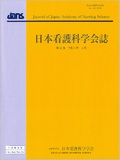Japanese
English
- 販売していません
- Abstract 文献概要
- 参考文献 Reference
要旨
目的:ドクターヘリのプレホスピタル活動において,新人フライトナース(以下,新人とする)にウェアラブルカメラを装着した.ウェアラブルカメラによって撮影された動画を使用した振り返りの有用性を検討した.
方法:新人1名を対象として,ウェアラブルカメラで撮影された動画から,プレホスピタル活動の問題点の抽出させた.さらに,1名の認定指導者フライトナース(以下,認定指導者とする)が同じ動画を確認し,新人が認識していない問題点を指導した.独自に定めた13項目について,25事例における新人と認定指導者が認識する問題点の相違数や項目の実施状況を分析した.
結果:新人と認定指導者では,プレホスピタル活動において認識する問題点に相違を認め,新人が認識していない問題点が多くあった.実施率が低い項目は,フライト記録は28%,バイタルサインなどの患者状態とフライトドクターとの情報共有は44%であった.
結論:プレホスピタル活動中にウェアラブルカメラにより撮影された動画を使用した事例の振り返りは,新人の活動の客観的な評価を可能にする.
Objective: A wearable camera was attached to a novice flight nurse (“novice”) while being engaged in prehospital care of a doctor helicopter. The purpose of this study was to examine the usefulness of the video recorded by the camera during prehospital care in order to review the performance of a novice.
Method: One novice was asked to identify problems in prehospital care services through videos recorded by a wearable camera. In addition, one certified instructor flight nurse (“certified instructor”) checked the same videos and showed the novice the problems that she did not recognize. The number of differences in the problems recognized by the novice and the certified instructor were analyzed. The video review checked whether 13 key items (actions such as checking patient's vital signs) were implemented by the novice during the prehospital care.
Results: There were differences in the problems recognized by the novice and the certified instructor in prehospital activities, and many problems were not recognized by the novice. The items with the lowest implementation rates were flight records (28%) and information sharing with the flight doctor regarding patient status such as vital signs (44%).
Conclusions: Review of cases using videos Recorded by a wearable camera during prehospital activities enables objective evaluation of a newcomer's performance.
Copyright © 2021, Japan Academy of Nursing Science. All rights reserved.


